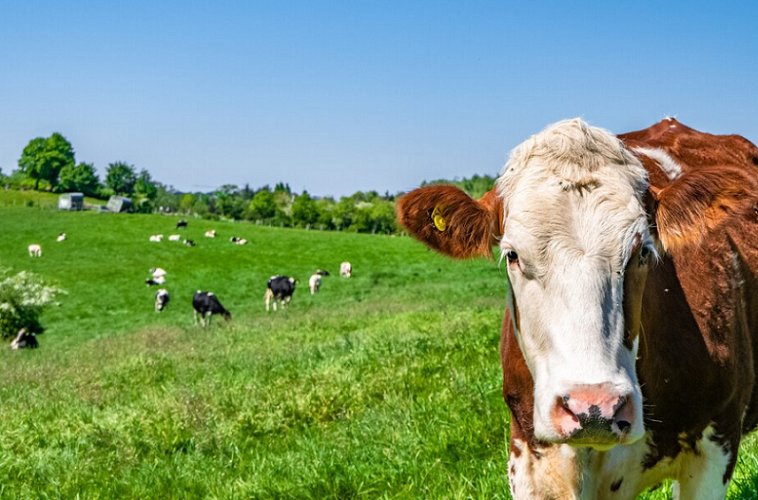USDA Releases H5N1 Avian Flu Genetic Sequences: Insights and Concerns Unfold
Sourse: The DairyNews
In a bid to enhance scientific understanding and surveillance of the H5N1 avian flu virus, the US Department of Agriculture (USDA) Animal and Plant Health Inspection Service (APHIS) has divulged 239 recent genetic sequences sourced from poultry, wild birds, and dairy cows. This data deluge aims to illuminate the trajectory and dynamics of the virus's spread.

Recent developments within the past three days have seen APHIS flagging four fresh H5N1 detections within dairy herds, alongside additional positive identifications in wild avian populations and poultry. Concurrently, the Centers for Disease Control and Prevention (CDC) have provided an update on their proactive measures to monitor and address potential human infections.
Anticipation Surrounding Genetic Sequences
As the H5N1 outbreak approaches its one-month milestone, crucial questions linger regarding the newfound ability of the 2.3.4.4b H5N1 clade to infect dairy cows, and the mechanisms fueling its dissemination within bovine populations. Veterinary experts worldwide are eagerly awaiting insights to safeguard both bovine and human health from this escalating threat.
Expressing concerns over the sluggish dissemination of genetic sequences and investigative details, some scientists have lamented the delays hampering comprehensive analysis. Prior to this recent disclosure, only a handful of genetic sequences were accessible, including those from cows and cats outlined in a preprint paper by a team from Iowa State University.
APHIS's decision to share raw sequence data via the National Institutes of Health National Center for Biotechnology Information, rather than the conventional route of GISAID, underscores its commitment to transparency and expediting research endeavors. These sequences, sourced from various animal species including cattle, cats, chickens, skunks, raccoons, and birds, will be continuously updated and made accessible for ongoing studies.
Dr. Louise Moncla, Assistant Professor of Pathobiology at the University of Pennsylvania School of Veterinary Medicine, lauds the release of raw genetic sequencing data as a pivotal step forward. However, she cautions that comprehensive analysis and interpretation will necessitate considerable time, tempering expectations for immediate insights into the virus's evolutionary trajectory.
Expanded Detections Across Animal Populations
In tandem with the genetic revelations, APHIS's recent updates have spotlighted a surge in H5N1 detections within dairy cattle and poultry populations. Notably, four new H5N1 incidents have been recorded within dairy herds, bringing the total count to 32. Additionally, poultry flocks, including a commercial turkey farm in Michigan and a hatchery in New Mexico, have reported fresh outbreaks. Wild avian species, predominantly concentrated in the eastern regions, have also shown an uptick in H5N1 incidences.
Susceptibility to Antivirals and Vaccine Evaluation
Addressing concerns over antiviral efficacy, the CDC's latest update confirms the susceptibility of the H5N1 virus to commercially available neuraminidase inhibitors. However, ongoing assessments are underway to ascertain susceptibility to alternative medications such as baloxavir marboxil. Furthermore, the CDC is rigorously evaluating existing candidate vaccine viruses to gauge their efficacy against the H5N1 strain isolated from the recent human case in Texas.
Beyond pharmaceutical interventions, the CDC is actively designing epidemiological field studies to unravel the intricacies of the outbreak. Preliminary surveillance data from emergency departments and flu testing sites in affected areas suggest no alarming trends thus far.
As stakeholders worldwide await further insights, concerted efforts by governmental agencies, research institutions, and healthcare entities remain pivotal in containing the burgeoning threat posed by the H5N1 avian flu virus.
Anticipation Surrounding Genetic Sequences
As the H5N1 outbreak approaches its one-month milestone, crucial questions linger regarding the newfound ability of the 2.3.4.4b H5N1 clade to infect dairy cows, and the mechanisms fueling its dissemination within bovine populations. Veterinary experts worldwide are eagerly awaiting insights to safeguard both bovine and human health from this escalating threat.
Expressing concerns over the sluggish dissemination of genetic sequences and investigative details, some scientists have lamented the delays hampering comprehensive analysis. Prior to this recent disclosure, only a handful of genetic sequences were accessible, including those from cows and cats outlined in a preprint paper by a team from Iowa State University.
APHIS's decision to share raw sequence data via the National Institutes of Health National Center for Biotechnology Information, rather than the conventional route of GISAID, underscores its commitment to transparency and expediting research endeavors. These sequences, sourced from various animal species including cattle, cats, chickens, skunks, raccoons, and birds, will be continuously updated and made accessible for ongoing studies.
Dr. Louise Moncla, Assistant Professor of Pathobiology at the University of Pennsylvania School of Veterinary Medicine, lauds the release of raw genetic sequencing data as a pivotal step forward. However, she cautions that comprehensive analysis and interpretation will necessitate considerable time, tempering expectations for immediate insights into the virus's evolutionary trajectory.
Expanded Detections Across Animal Populations
In tandem with the genetic revelations, APHIS's recent updates have spotlighted a surge in H5N1 detections within dairy cattle and poultry populations. Notably, four new H5N1 incidents have been recorded within dairy herds, bringing the total count to 32. Additionally, poultry flocks, including a commercial turkey farm in Michigan and a hatchery in New Mexico, have reported fresh outbreaks. Wild avian species, predominantly concentrated in the eastern regions, have also shown an uptick in H5N1 incidences.
Susceptibility to Antivirals and Vaccine Evaluation
Addressing concerns over antiviral efficacy, the CDC's latest update confirms the susceptibility of the H5N1 virus to commercially available neuraminidase inhibitors. However, ongoing assessments are underway to ascertain susceptibility to alternative medications such as baloxavir marboxil. Furthermore, the CDC is rigorously evaluating existing candidate vaccine viruses to gauge their efficacy against the H5N1 strain isolated from the recent human case in Texas.
Beyond pharmaceutical interventions, the CDC is actively designing epidemiological field studies to unravel the intricacies of the outbreak. Preliminary surveillance data from emergency departments and flu testing sites in affected areas suggest no alarming trends thus far.
As stakeholders worldwide await further insights, concerted efforts by governmental agencies, research institutions, and healthcare entities remain pivotal in containing the burgeoning threat posed by the H5N1 avian flu virus.
Key News of the Week











